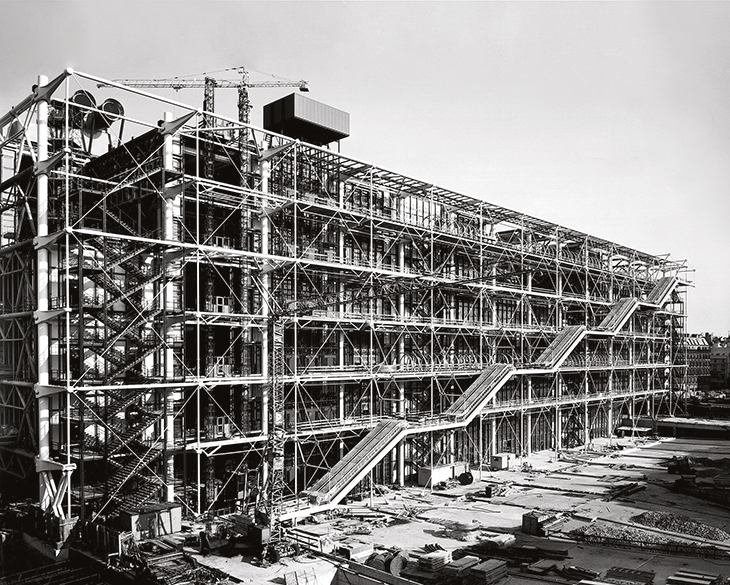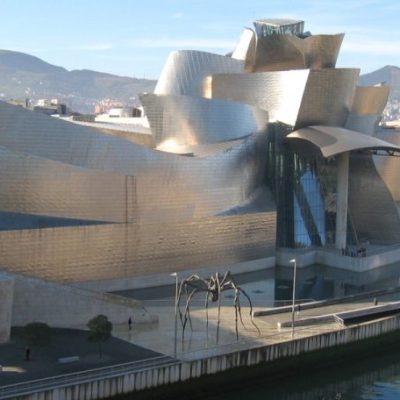This review of Charles Saumarez Smith’s The Art Museum in Modern Times and Dinah Casson’s Closed on Mondays: Behind the Scenes at the Museum appears in the April 2021 issue of Apollo. Preview and subscribe here.
In the mid 1930s, Eric Maclagan, the director of the Victoria and Albert Museum, gave a speech to fellow gallery professionals in which he outlined his attitude – which was presumably theirs too – to his institution’s visitors. The public, he said, could be summed up as ‘a noun of three letters beginning with A and ending with S’, at best a necessary evil, ‘but we heave sighs of relief when they go away and leave us to our jobs.’ A museum’s real role, he said, was scholarly and curatorial.
 In The Art Museum in Modern Times, Charles Saumarez Smith thoughtfully charts how quickly and definitively museums have moved on from that Casaubonish attitude to become the public palaces they are now, in which the paraphernalia of outreach – cafes, shops, lecture theatres, contemplative spaces and the rest – are as important a concern as any collection of art. As a former director of the National Portrait Gallery and the National Gallery, and more recently chief executive of the Royal Academy, the author is uniquely well placed to give his observations on how the modern museum got that way.
In The Art Museum in Modern Times, Charles Saumarez Smith thoughtfully charts how quickly and definitively museums have moved on from that Casaubonish attitude to become the public palaces they are now, in which the paraphernalia of outreach – cafes, shops, lecture theatres, contemplative spaces and the rest – are as important a concern as any collection of art. As a former director of the National Portrait Gallery and the National Gallery, and more recently chief executive of the Royal Academy, the author is uniquely well placed to give his observations on how the modern museum got that way.
Even as Maclagan was speaking, the porticoed museum was on its way out. In New York, planning for the Museum of Modern Art was underway with its director, Alfred Barr, envisaging it as a place to display the best new photography, design, typography and decorative arts as well as the fine arts. ‘I find the art of the present more interesting and moving than the art of the Sung or even the quattrocento,’ he said, somewhat heretically for the time. MoMA’s early exhibitions included such items as ball bearings and a toilet flush valve.
Saumarez Smith displays the evolution of museums during the 20th and 21st centuries through 43 pen-portraits of institutions he admires – from the Kimbell in Fort Worth and the Sainsbury Centre in Norwich to the Louvre-Lens and the West Bund Museum in Shanghai. In discussing the principles behind each he weaves together the wishes (and egos) of patrons and architects with the exigencies of individual collections and the times in which each project was constructed. By the end a pattern emerges of the museum as a public statement in which the building itself, almost necessarily the work of a superstar architect – be they Richard Rogers or Norman Foster, Tadao Ando or Frank Gehry – has become the purpose, a receptacle that can be filled later.
This, says Saumarez Smith, is due to the ‘universal decline in belief in a master narrative made manifest through the display of a museum’s permanent collection. In its place is a growing interest in the idea of exploration and the validity of individual response.’ Nevertheless, the list of the top 10 most-visited museums in 2019 refutes his argument: the Louvre at number one, and the Vatican, Met, British Museum, National Gallery and Hermitage all jostling just behind, suggests that the master narrative still has clout. And there is nothing mutually incompatible about impersonal didacticism and personal revelation.
The Centre Pompidou, Paris, designed by Richard Rogers and Renzo Piano and photographed in August 1976 in the course of construction

It is however indisputable that the modern museum is about more than just art: after all, who can quickly name half a dozen gems from the Guggenheim Bilbao’s permanent collection, or indeed Tate Modern’s? As Saumarez Smith states, it is the shape of a museum that in turn shapes the visitor experience. What visitors often want are ‘social experiences as much as an intellectual ones’. It was just this thinking that underlay Renzo Piano and Richard Rogers’s Pompidou Centre (1977), and their desire for ‘a building for information, fun and culture’, and Nicholas Serota’s idea that Tate Modern (2000) should be ‘part of the social fabric as well as the cultural fabric’. Its sharpest expression came with Gehry’s Guggenheim Bilbao (1997), which was always intended to be a symbol of Basque self-belief. The intention to raise the profile of an entire region was there from the start even if its extent hadn’t been fully anticipated.
 What goes on inside these modern prodigy houses is the topic of Dinah Casson’s Closed on Mondays. The book, she says, is a way of working through some of ‘the conundrums that have rattled around my head’ during her work as an exhibition designer. Why are gold frames ubiquitous, regardless of artist, period or subject? Why do so few contemporary art galleries have windows? What should label texts do? What is the role of facsimiles in displays?
What goes on inside these modern prodigy houses is the topic of Dinah Casson’s Closed on Mondays. The book, she says, is a way of working through some of ‘the conundrums that have rattled around my head’ during her work as an exhibition designer. Why are gold frames ubiquitous, regardless of artist, period or subject? Why do so few contemporary art galleries have windows? What should label texts do? What is the role of facsimiles in displays?
Casson acknowledges that she herself can no longer look at an exhibition without focusing on such nitty-gritty, but consequently she is adept at showing how much difference minutiae make. Gold frames, for example, were a requirement of submissions to the Royal Academy until 1920 even though the artists themselves may not have wanted them. Degas was one painter who designed his own frames, almost art deco in their simplicity, and would buy back paintings from collectors who had had the effrontery to replace them with gold surrounds. As Casson shows in a pair of images contrasting his original and a replacement gold frame for his Danseuse au repos (1879), the effect was negatively transformative.
She makes the case for facsimiles through her own work on replicas of the Lascaux Caves and Factum Arte’s full-scale scanning of Veronese’s Wedding Feast at Cana for its original setting in San Giorgio Maggiore in Venice; there the power of the replica is tangible, whereas the original in the Louvre, which stares out on the backs of the herd of visitors trying for a glimpse of the Mona Lisa, is largely ignored. And through similarly telling aperçus she reveals the tweaks and small margins that determine a display’s success or failure.
With their complementary perspectives – the macro and the micro – and well-chosen examples, both Saumarez Smith and Casson show just how much thought goes into shaping a museum experience appropriate for the modern A*S.
April 2021 issue of Apollo. Preview and subscribe here.



